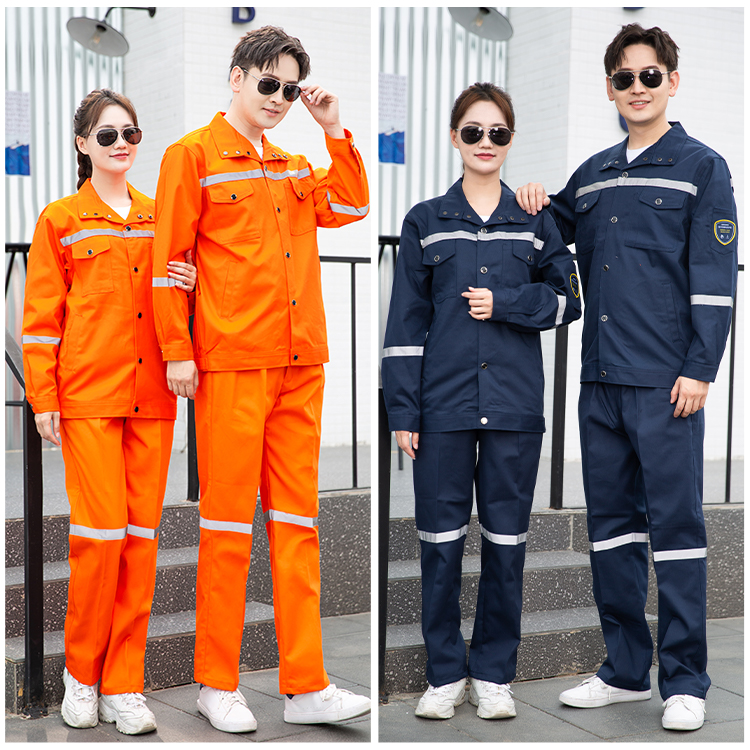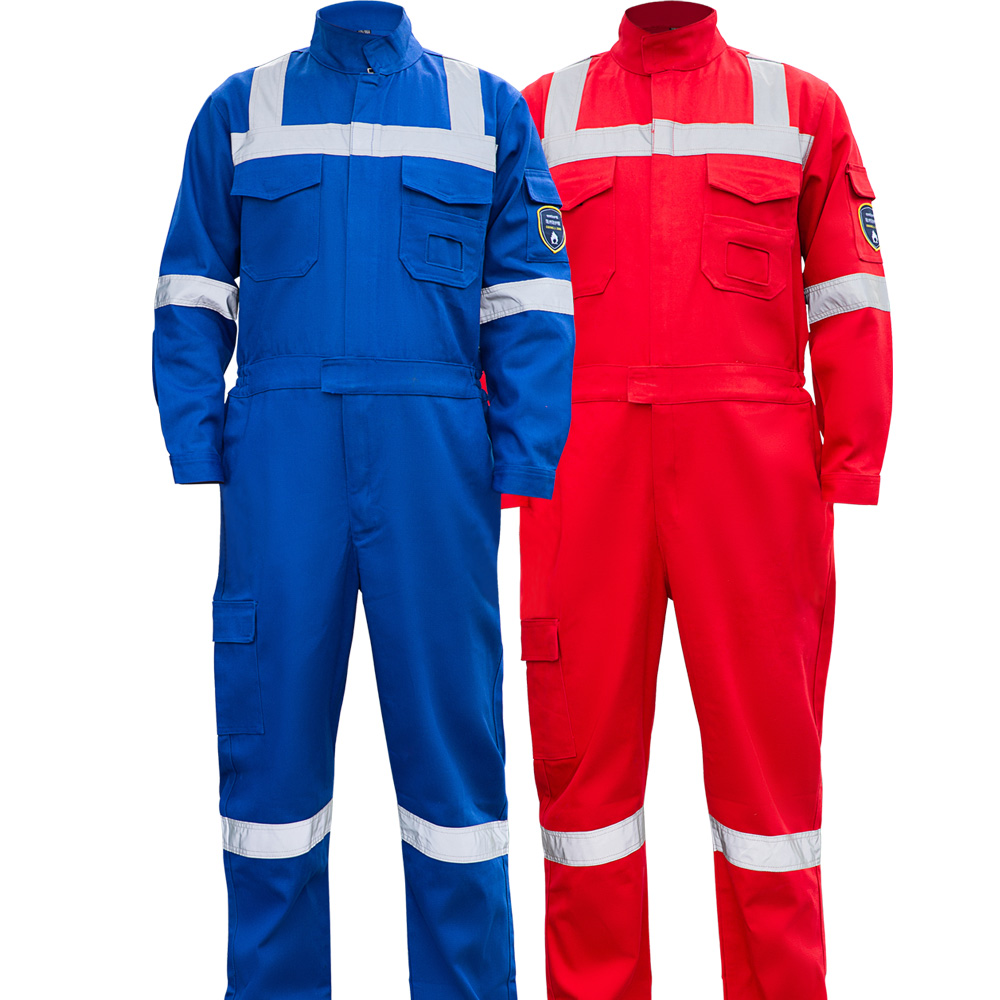A Guide to the Best Workwear for the Power Industry
Author:HAIYUAN TIME:2025-08-07Read:
Selecting the right workwear for the power industry isn't just about comfort – it's critical safety equipment designed to protect against unique hazards like arc flash, electric shock, fire, molten metal splash, and environmental exposure. Here's a comprehensive guide to choosing the best workwear:
Core Principles for Power Industry Workwear
- FR (Flame-Resistant) is Non-Negotiable: This is the absolute baseline requirement. FR fabrics self-extinguish after the ignition source is removed, significantly reducing burn injuries.

- Arc Flash Protection (ATPV or EBT Rating): Garments must meet specific standards (like ASTM F1506, IEC 61482-2) and have an Arc Thermal Performance Value (ATPV) or Energy Breakopen Threshold (EBT) rating measured in cal/cm². This rating indicates the incident energy level the fabric can block before causing a 2nd-degree burn or breaking open.
- Compliance with Standards: Ensure garments meet relevant national/international standards:
- North America: ASTM F1506 (Standard Performance Specification for FR Textile Materials), NFPA 70E (Standard for Electrical Safety in the Workplace).
- International: IEC 61482 (Live working - Protective clothing against the thermal hazards of an electric arc).
- Durability & Comfort: Workers wear this gear for long shifts in demanding conditions. It must be tough, breathable, allow movement, and maintain its FR properties through wear, washing, and environmental exposure.
Key Components of Power Industry Workwear
- FR Shirts & Tops:
- Fabrics: Cotton/Nylon blends, Modacrylic/Cotton blends, FR-treated Cotton, inherent FR fibers like Nomex® (Meta-Aramid), Kevlar® (Para-Aramid - often blended), Protera® (Modacrylic), PBI (Polybenzimidazole - high end).
- Features:
- Long Sleeves: Essential for arm protection.
- Chest Pockets: Flap closures or snaps (avoid Velcro near electrical panels).
- Fit: Snug but not restrictive. Loose clothing can increase arc flash severity.
- Collars: Button-down collars preferred to stand up and protect the neck.
- Wrists: Button or snap cuffs for secure closure under gloves.
- Visibility: Consider ANSI Class 2 or 3 high-visibility striping if working near traffic or low light.

- FR Pants:
- Fabrics: Same core options as shirts. Often slightly heavier weight for durability.
- Features:
- Knee Pads: Reinforced knee areas or pockets for insertable knee pads are crucial for comfort during ground work.
- Tool Pockets: Secure pockets for tools (snaps/flaps).
- Fit: Straight or relaxed fit over boots, but not baggy. Belt loops essential.
- Durability: Double-stitching, reinforced stress points (crotch, knees, seat).
- Options: Cargo pants, denim-style, ripstop fabrics.
- FR Outerwear (Jackets, Parkas, Rain Gear):
- Essential for: Cold weather, wet weather, or as an added layer over primary FR for higher incident energy tasks (check ATPV layering).
- Fabrics: FR-treated polyester shells, inherent FR fleece linings, waterproof/breathable FR membranes.
- Features: Storm flaps over zippers, adjustable cuffs, hoods (often detachable), high-visibility options. Ensure compatibility with underlayers.
- FR Coveralls:
- Ideal For: Tasks requiring full-body protection without gaps, dirty environments, or confined spaces.
- Features: Front zipper closure (often with storm flap), ankle zippers for boot access, tool pockets, bi-swing back for mobility. Choose weight based on climate/task.

Choosing Fabrics: Treated vs. Inherent FR
| Feature |
Treated (FR) Fabrics |
Inherent FR Fabrics (Nomex®, Kevlar®, Protera®, etc.) |
| FR Mechanism |
Chemical finish applied to fibers (e.g., cotton) |
FR properties are part of the fiber molecule itself |
| Durability |
FR properties can diminish over time with abrasion, washing (esp. harsh chemicals), and UV exposure. Requires careful laundering. |
FR properties are permanent, lasting the life of the garment. More resistant to wear/abrasion. |
| Feel/Comfort |
Often feel more like traditional cotton workwear initially. |
Can feel slightly different (e.g., stiffer, more synthetic) but modern blends are very comfortable. |
| Cost |
Generally lower initial cost. |
Higher initial cost. |
| Best For |
Lower-risk tasks, environments with less wear/abrasion, budget-conscious programs where strict laundering is possible. |
High-risk tasks, demanding environments, long-term cost-effectiveness (lasts longer), situations where laundering control is difficult. |
Essential Accessories (Must Also Be FR Rated!)
- FR Balaclavas/Flash Hoods: Protect neck and head under the hard hat. Crucial for high incident energy work.
- FR Gloves: Leather drivers with FR backing, specific voltage-rated rubber gloves with leather protectors. Ensure they meet relevant electrical and arc flash standards.
- FR Safety Glasses/Goggles: Standard safety eyewear can melt; FR-rated frames/lenses are essential.
- FR Hard Hat Liners: Provide head protection and warmth under the hard hat.
- FR Socks: Protect feet/ankles from thermal hazards. Often wool blends.
- FR Footwear: Leather safety boots are generally preferred. Some manufacturers offer boots with specific FR linings or components. Avoid conductive materials.
Critical Selection Factors
- Hazard Assessment (NFPA 70E): Determine the Incident Energy Level (cal/cm²) at the work location. Choose garments with an ATPV/EBT rating HIGHER than the calculated incident energy.
- Layering: Understand how layers add protection. The ATPV of layered garments isn't simply additive, but layering significantly increases protection. Consult manufacturer charts.
- Fit: Proper fit is critical for safety. Loose clothing can increase burn injury severity in an arc flash by trapping heat or igniting more easily. Garments should be comfortable but not baggy.
- Visibility Requirements: Assess if high-visibility striping (ANSI 107 Class 2 or 3) is needed for the work environment (roadside, substations, low light).
- Climate & Environment: Choose weight and features appropriate for heat, cold, rain, wind, or chemical exposure.
- Durability & Care: Consider the work environment's abrasiveness. Understand the garment's laundering requirements to maintain FR properties (especially for treated fabrics). Inherent FR often offers easier care.
- Comfort & Worker Acceptance: Uncomfortable gear won't be worn properly. Prioritize breathability, moisture-wicking, stretch panels, and ergonomic design.
Top Brands (Known for Quality FR Workwear)
- HAIYUAN: Wide range of FR apparel, strong in treated cotton.
- Ariat: Known for durable and comfortable FR work boots and apparel.
- Carhartt FR Series: Rugged durability trusted by many trades, expanded FR line.
- Tyndale USA: Focus on FR workwear programs and specific industry needs.
- Lakeland Industries: Global provider of industrial protective clothing, strong FR offerings.
- National Safety Apparel (NSA): Comprehensive FR solutions, including innovative fabrics.
- DuPont (Nomex & Kevlar): The originators; license their fibers to many garment manufacturers (e.g., Bulwark, Tyndale, others).
- Wrangler Riggs Workwear (FR Line): Durable FR options.
- Honeywell (Miller FR): Known for FR outerwear and specific PPE.
- Occunomix: Focus on FR workwear for utilities and related industries.
Best Practices
- Conduct a Thorough Hazard Assessment: This is step one. Know your risks.
- Develop a Comprehensive PPE Program: Based on NFPA 70E or equivalent standards.
- Choose Garments Meeting Applicable Standards: Look for certification labels (ASTM F1506, IEC 61482, NFPA 2112 for flash fire).
- Prioritize Fit and Comfort: Involve workers in trials if possible.
- Implement Strict Laundering Procedures: Follow manufacturer instructions meticulously, especially for treated FR. Never use bleach or fabric softeners.
- Regular Inspection & Replacement: Inspect garments before every use. Replace immediately if damaged, contaminated (oil, grease), or excessively worn. Replace treated FR garments according to manufacturer lifespan guidelines or if FR properties fail testing.
- Full Head-to-Toe Protection: Never mix FR and non-FR garments. Ensure all layers worn over street clothes (including underwear) are FR-rated.
Investing in high-quality, properly rated, well-fitting FR workwear is a fundamental investment in the safety and well-being of power industry workers. Always base your selection on a detailed hazard analysis and compliance with relevant safety standards.


